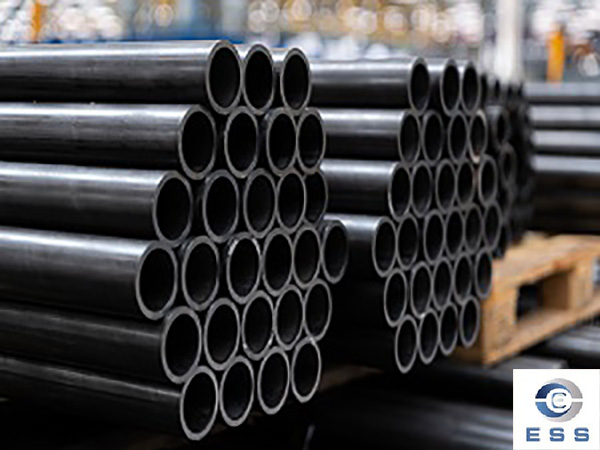Piercing is the first process of deformation of
seamless carbon steel pipe, and its function is to pass the solid tube blank out of the hollow capillary. Due to the surface defect or eccentricity (uneven wall thickness) of the threaded capillary, it is difficult to eliminate or reduce it in the subsequent deformation process. Therefore, the quality of the perforated capillary has an extremely important influence on the quality of the hot-rolled seamless steel pipe. The perforation methods of the tube blank include press punching, push rolling perforation and oblique rolling perforation.

1 Pressure punching
Pressure punching is to put the heated billet or corrugated steel ingot into the circular mold, and then use the press to drive the punch to punch out the inner hole in the center of the tube blank. Generally, the area of the punched inner hole is equal to or slightly larger than the gap between the blank and the round die, so the deformation is very small, and the elongation coefficient generally does not exceed 1.1.
2 push rolling piercing
Push-roll piercing can be regarded as an improved form of pressure punching, that is, the fixed round die during pressure punching is changed to a pair of round-hole pass rolls, and the rolls are driven by a motor. When the roll turns to bite the tube blank into the pass and roll it, the punch fixed in the center of the pass penetrates it into the hollow capillary. For push rolling, a reverse thrust is added to the end of the billet, so it is called push rolling piercing.
The advantages of push roll perforation are as follows:
1) The center of the billet is in a state of compressive stress. This process is a combined process of stamping and longitudinal rolling, which will not cause infolding defects of twin-roll cross rolling. The inner surface of the capillary is of good quality, and the requirements for the quality of the blank are relatively low;
2) The average unit pressure of the punch is about 50% smaller than that of the pressure perforation, so the tool consumption is small;
3) During the piercing process, the metal in the center of the blank is mainly deformed, so that the coarse and loose structure in the center is well processed and densified. At the same time, under the action of compressive stress, the inner and outer surfaces of the capillary are not easy to crack.
4) The productivity is higher than that of pressure piercing, up to two per minute;
Push-rolling perforation was a method for circular continuous casting technology that was not yet mature at that time, and required square continuous casting slab perforation and tube rolling. Although it has been greatly improved compared with pressure stamping, the amount of deformation is still small, so the capillary is short and thick, and it is particularly prone to large uneven wall thickness. Therefore, after piercing, it is necessary to set up a skewed roll stretching machine to reduce the capillary wall thickness, extend the capillary length, and reduce the unevenness of the capillary wall thickness. However, with the maturity of round billet continuous casting technology, this method has been gradually replaced by cross rolling piercing.
3 cross rolling piercing
The cross-rolling piercing is to use the circular tube billet to be bitten by two mutually inclined and co-rotating rolls, and advance in a spiral shape. The tube blank passes through the hollow capillary through the pass formed by the roller, the guide plate (or guide roller, guide plate) and the plug.
In fact, the round tube billet is bitten by the roll, rotated and compressed, deformed, and spirally advances. Before contacting the plug, the plastic deformation of the central area of the tube blank under repeated tensile and compressive stress gradually develops into loosening. As the looseness increases, the center breaks down forming a "cavity" (also known as the "swing effect"). Therefore, it is necessary to adjust the front end of the plug to the loose position of the tube blank, so as not to form a "cavity". At this time, the perforation force consumption is small, the tool wear is small, and the capillary quality is good. If the "cavity" has been formed, the tube blank is deformed in contact with the plug, and it is easy to form an "inward fold" in the capillary inner hole.













 Eastern Steel Manufacturing Co.,Ltd not only improve product production and sales services, but also provide additional value-added services. As long as you need, we can complete your specific needs together.
Eastern Steel Manufacturing Co.,Ltd not only improve product production and sales services, but also provide additional value-added services. As long as you need, we can complete your specific needs together.










